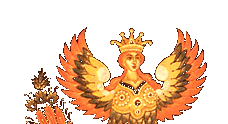Amber is ancient tree resin that flowed out of a combination of coniferous trees in what today is geographically called the Baltic regions. What we know today as amber formed 40-60 million years ago as the multi-colored substance (it was white, clear, yellow, orange, and has over 250 known hues in various forms) seeped from pine bearing trees that might have been even larger than the Redwoods found in northern California. As the, then liquid substance, trickled slowly down the bark it was deposited in the soil at the base of the trees. Over the years it was covered, while still in its gummy form, until there was enough pressure exuded on it that it could now harden. Unlike fossilized wood it does not hold properties of minerals, but nature's version of million year fiberglass. Because it was compressed by sediment, experienced severe climactic changes (like the great ice age), and was in some instances submerged by salt water it oxidized over millions and millions of years. However, this oxidization was so slow that the chemical properties that made it sticky left the material, shrunk it, but without causing cracking. As it oxidized it hardened due to the polymerization (the rearranging of molecules) of the resin under the conditions that it was found.
Although we know that amber is not a gemstone or a mineral, and we know that it had vegetable origins, we don't know exactly what species of tree it came from or the exact process that is oxidized and polymerized in. This of course for scientists is difficult to stomach since such a simple material cannot be so simply explained. So it is a wonder what ancient peoples thought about this wondrous, glowing stone.
Almost every culture has its own lore regarding the explanation and origins of amber. One Greek myth surrounds an ill-fated attempt by the son of Helios, a mortal, to drive his father's chariot at the dawn of the day. Everyday Helios would get in a chariot pulled by three horses, signaling the arrival of the sun and the disappearance of the moon and the stars. When Helios' son Phaethon to try this the horses figured out that they could run loosely upon the sky, as their regular master did not have them under his control. When the chariot got too close to the earth, as it pulled the sun, the earth became parched, fields burned, and the people began to suffer. To put things back into order Zeus struck Phaethon with lighting, where he fell into the sea. As his sister's mourned him they were turned into poplar trees because Zeus did not approve, and their tears became amber, which dripped into the waters.
Another myth surrounding amber came from Lithuanian culture. In it the goddess of the mermaids, Jurate, lived at the bottom of the Baltic sea, in an amber palace. A fisherman, Kastytis, would fish and impede upon her kingdom. Although Jurate sent entourages of mermaids to warn him to stop he did not listen and continued casting his nets. So when she went to see and tell him to stop for herself, she fell in love and took him back to live in her amber palace. Perkunas, the god of thunder, upon finding this out was so angered (because she fell in love with a mortal) he threw a bolt at Jurate's palace. The bolt made ruins of the palace and killed Kastytis. As further punishment Jurate was chained to what was left of her palace. When she mourns and cries for her earthly love her tears are of amber, and when storms begin they dislodge the remnants of her castle, which are thrown to the sea shore.
The Lithuanian's made this story up to explain the tear drop shaped pieces of amber that would appear on the Baltic Sea shores. The other chunks that would appear on the shore after stormy weather were thought to be from her castle.
This brings to light another interesting property of amber, which allows it to float in salt water. Because the forest during prehistoric times was where the Baltic Sea is today, amber that breaks off from the bottom of the sea floats up and waits to be pushed by wave producing winds to the shore. This is one way to test to see if a piece of amber is true or not. There are more ways to determine what genuine amber is, which can be done by virtually anyone. One is by trying to scratch it with a fingernail and then a butter knife. If a fingernail does not scar it, and then the butter knife leaves a scratch with a powdery residue it is amber. When true amber is fractured it splinters off in jagged pieces and cannot be shaved. When true amber burns it lets off a scent of resin and pine that is quite fragrant. But so as not to ruin a specimen the easiest thing is taking it to a jeweler, who has the gem identifying equipment that will tell a person in a few minutes.
However, without the fancy polarized glass and refractometers scientists did not know what amber was chemically based from. Until the mid-1700's many thought amber to be petroleum based, but when Russian scientist Mikhail Lomonosov came along he changed all scientific thought on amber. He was the first to state, and prove, that amber was vegetable based. He did many tests and found succinite was a major component in amber. And when he separated water from amber by chemical means it gave off the scent of succinic acid, which is a property of growing things. He also measured the gravity of amber to be equal to that of pine resin. This also made the inclusions of insects make sense, because how could a something petroleum based capture living things so perfectly. It was easier to theorize that they were caught as the bleeding trees captured the bugs as their resin seeped down their trunks.
The appeal of amber for people's of the world can be dated back over 10,000 years. Amber is found in burial chamber, it has helped track ancient trade routes, and is documented in literature and the mythology of many pre-Christian cultures. Another appealing aspect of amber is that it is warm. When a person picks up a rock, a piece of glass, or a crystal it is cold and hard. When a piece of amber is picked up it is light, warm, and soft; not unlike a piece of paper-mache. It also sheds light into the past and allows a person to see perfect specimens that lived over 40 million years ago, and then go out and see their evolved cousins flying around outside as the modern insects we see.
Even today one can go out on the sea shore of the Baltic regions and comb the sands of amber. There is thought to be a few more hundred million tons of amber hidden beneath the sea and in the surrounding areas.
|



